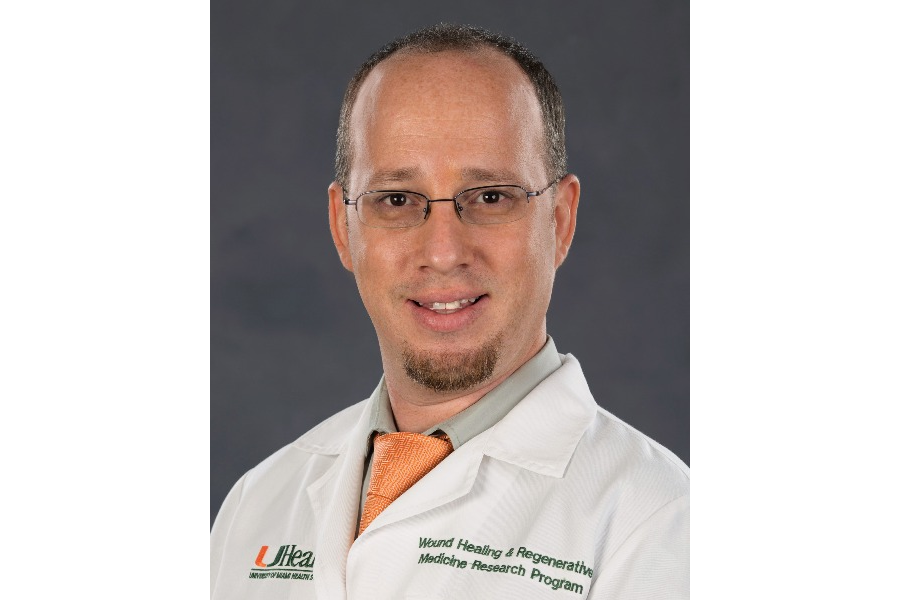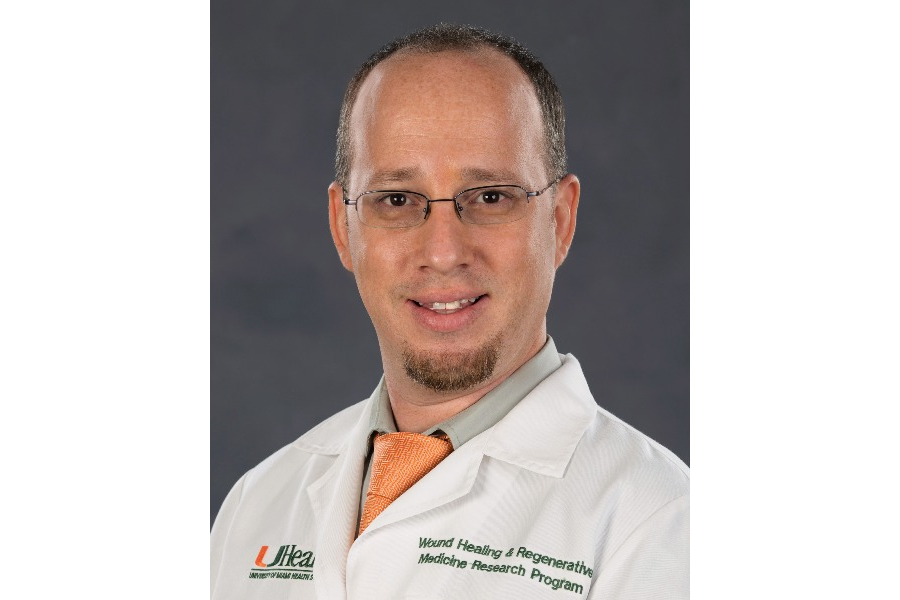Skin Failure: Frequently Asked Questions
November 20, 2020
By: Mary Brennan, RN, MBA, CWON, Karen Lou Kennedy-Evans, RN, FNP, APRN-BC, and Diane Krasner, PhD, RN, CWCN, CWS, MAPWCA, FAAN
Editor's Note: On April 2, 2020, WoundSource hosted its first ever virtual conference, WoundCon Spring 2020. The conference hosted 13 CME/CE accredited sessions that were attended by over 6,000 health care professionals around the world. The response was so enthusiastic, we asked some of our speakers to answer the most frequently asked questions on their subjects. This is the seventh blog of a 13-part series; access the full series here.
What is the best way to differentiate between a Trombley-Brennan terminal tissue injury (TB-TTI) and deep tissue injury (DTI)?
Mary: This is the most challenging because these injuries resemble one another. The difference is that a TB-TTI does not evolve as a DTI does. There may be an increase in surface area but no change in the appearance or type of tissue. A TB-TTI will look the same in color and appearance on day 3 or 5 as it does on day 1.
Can you review the importance of blanching versus non-blanching in a TB-TTI?
Mary: Blanching in the center of a TB-TTI was noted to herald death within 2 hours.
Is the diagnosis of Kennedy terminal ulcer (KTU) dependent on the patient’s dying? Are there some patients who reperfuse and heal?
Karen: Yes, there have been some reported cases of patients with a noted "Kennedy terminal ulcer" who go on to reperfuse and heal. There also are reported cases of patients who develop a "Kennedy terminal ulcer" who do not initially die but perhaps are transferred out of the intensive care unit or are even transferred out of acute care with a "Kennedy terminal ulcer." Most often these patients are lost to follow-up, so we do not have data to know whether they did go on to die or whether they did go on to heal.
Want to learn more about skin failure? Gain full access to the WoundCon Spring sessions and earn CE/CME credit at WoundSource Academy
The Centers for Medicare and Medicaid Services recognize KTU in long-term acute care and do not code it as pressure injury. Would this apply to acute care, hospital? Not reportable?
Karen: At this time the KTU is recognized only in long-term acute care.
Why does KTU tend to be on the left side?
Karen: The 3:30 syndrome is an area of discolored intact skin with irregular borders that progresses rapidly, manifests unilaterally, and seems to be mostly on the left side of the gluteal cleft. It may be on the right also; however, for the case studies we have so far, it has developed on the left side.
Can a KTU be classified as such before death, or is it classified or coded this way only after the patient has died?
Karen: Yes, a KTU can be charted as such if that is what you suspect. Describe what you see. If this is what you suspect, chart the things that you see and the rationale behind why you think this is a "Kennedy terminal ulcer." Some of the descriptive observations you might see or know are sudden onset, superficial intact discoloration of the skin (often looking initially like a DTI), irregular borders, lesion that progresses rapidly, an area usually larger but superficial in depth, and the colors red, yellow, black, and maroon depending on the progressing of the lesion. Also describe the shape, which can be pear shape, butterfly shape, or horseshoe shape.
How can we help patients and their circle of care understand SCALE (skin changes at life’s end) and its implications?
Dr. Krasner: There are several times when it would be very appropriate to educate patients and their circle of care (family, significant others, caregivers, and other health care professionals who may be extended to the current interprofessional team) about SCALE:
- When a patient develops a SCALE wound
- When a patient enters hospice care
- When a patient is assessed to be at high risk for a SCALE wound
You can develop a SCALE information sheet for patients and their circle of care by extracting material from the SCALE Consensus Document, downloadable for free at www.dianelkrasner.com
What are the most important things to document in a SCALE case in case of a lawsuit from the family?
Dr. Krasner: Here are the top 10 things to document in a SCALE case:
- Initial admission skin or wound assessment
- Braden score and risk factors or comorbidities
- Wound care plan of care
- Prevention strategies
- Initial wound assessment
- Ongoing wound assessments
- Changes in the wound care plan of care and rationale
- Consults
- Patient and family education
- Provider statement(s) about why this is a SCALE wound
What should I do if I have a patient with a SCALE injury whom I want to move to palliative care, but the family insists the patient be kept on a healing trajectory?
Dr. Krasner: This is a common situation, and it is important that the entire health care team be engaged in the discussions with the patient and his or her circle of care. Details of care, options, and outcomes should be explained, so the best decisions can be made by the family. Sometimes, your facility’s Bioethics Committee may have to be consulted. Once undertaken, all of the above should be documented in the patient’s health care record.
Can a SCALE injury heal?
Dr. Krasner: SCALE wounds include a wide range of alterations in skin and tissue integrity, from mottling to malignant or fungating wounds. Some of these are more likely to resolve or heal than others. Although most SCALE wounds will not heal in the patient’s lifetime, some do improve or heal. So one must never give up hope, and wound care that meets the standard of care (palliative, maintenance, or aggressive pathways) should always be provided. There are the occasional patients who enter hospice care but who get better and do not die and whose wounds heal.
About The Authors
Mary Brennan is currently the Assistant Director of Wound and Ostomy Care at North Shore University Hospital and served as the chairperson of the Northwell Health System’s task force on Pressure Injuries. While chairing a system wide initiative to reduce the incidence of pressure injuries, a reduction of 70% in the incidence of hospital acquired pressure injuries was realized by the 23 facilities within the system. She serves on the Editorial Advisory Board of Advances in Skin and Wound Care and has presented posters, abstracts, and published on a variety of skin and wound care issues. She has been working on the terminal tissue injury phenomenon beginning with the initial patient observed with these skin changes in 2008. She has been a principle investigator and co-principle investigator on research studies including three involving the terminal tissue injury.
Karen Lou Kennedy-Evans has been a nurse for over 50 years and became the first Family Nurse Practitioner in Fort Wayne, Indiana in 1974. Ten years later, while working at the Bryon Health Center in Fort Wayne, Indiana, Karen started one of the first skin and wound care teams in a long term care facility. While her team conducted their weekly pressure injury rounds they noticed some patients developed wounds/lesions with certain characteristics that went on to die. Karen was recently selected to receive the “Inaugural Lifetime Achievement Award” at HMP’s Post-Acute Care Symposium (PACS) May 15, 2020, co-located with the 33rdannual Symposium on Advanced Wound Care (SAWC)/Wound Healing Society (WHS) meeting, May 13-17th, in San Diego, California. Karen has served on the board as the secretary of the National Pressure Ulcer Advisory Panel now known as the NPIAP. Karen is in private practice in Tucson, Arizona, and is an Adjunct Faculty at the University of Arizona School of Nursing and is Chairman of their Community Advisory Board.
Dr. Diane Krasner is a board-certified wound specialist with experience in wound, ostomy, and continence care across the continuum of care. She is a Fellow of the American Academy of Nursing and a Master of the American Professional Wound Care Association. Dr. Krasner is a consultant in wound and skin care and a legal nurse consultant/expert witness. Dr. Krasner received her Bachelor of Science in Nursing, Master of Science in Nursing, and PhD of Science in Nursing all from the University of Maryland School of Nursing (Baltimore, MD), and a Master of Science in Adult and Continuing Education from Johns Hopkins School of Continuing Studies. She was recently selected to receive the Annual John Boswick Memorial Award and Lectureship for lifelong achievement and dedication in the field of wound care. Dr. Krasner serves on the Board of Directors of the South Central Pennsylvania American Red Cross. Her research interests include wound pain, palliative wound care, and legal issues related to wound care. Dr. Krasner also has numerous publications in the wound care literature and has lectured nationally and internationally on wound and skin care.
The views and opinions expressed in this content are solely those of the contributor, and do not represent the views of WoundSource, HMP Global, its affiliates, or subsidiary companies.











